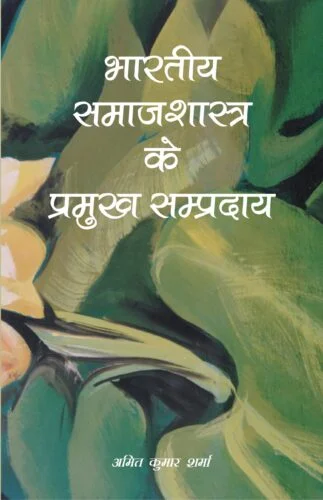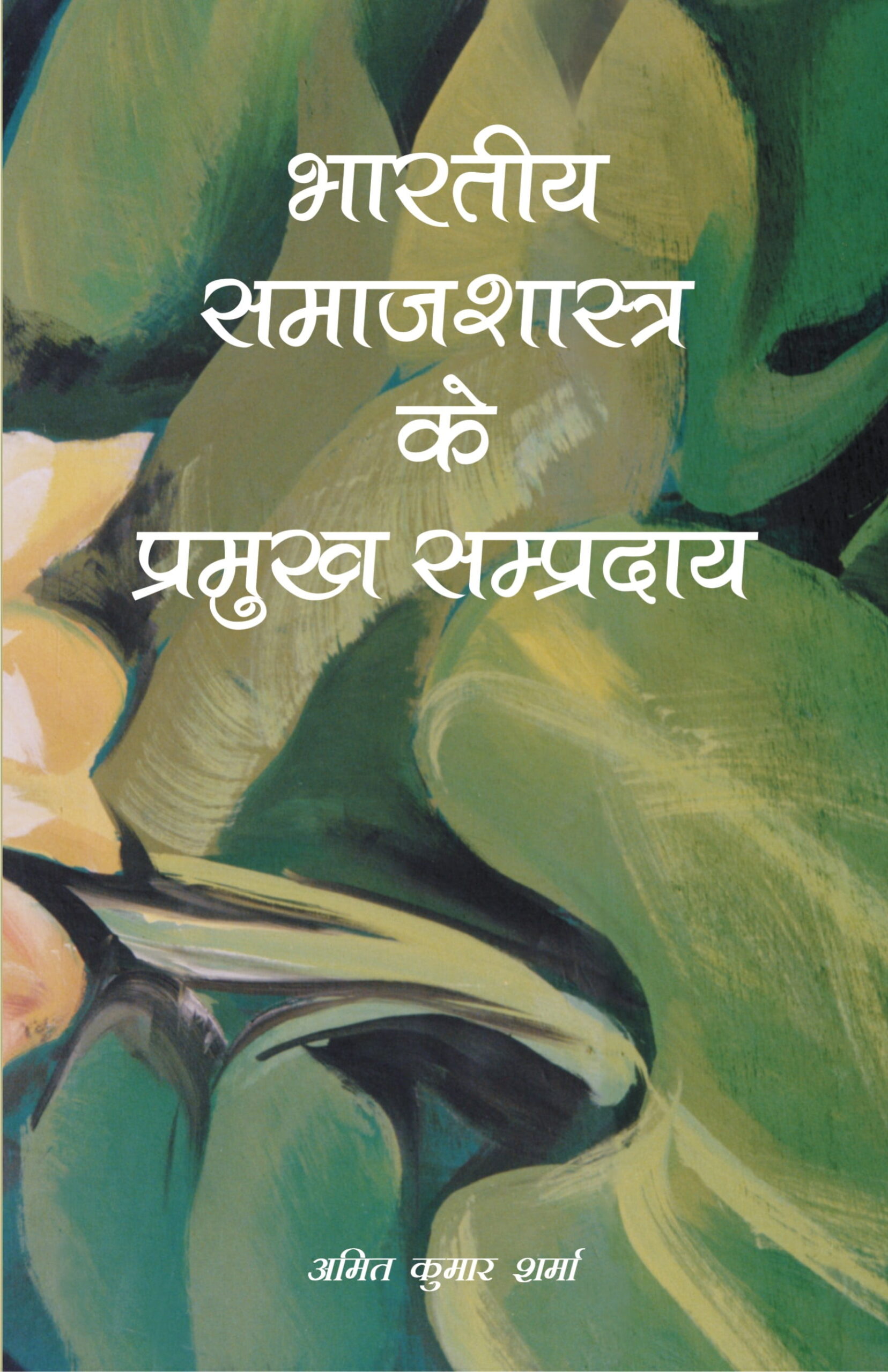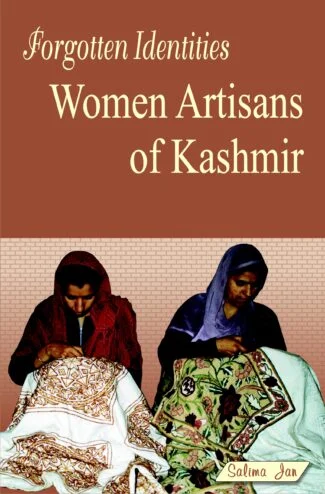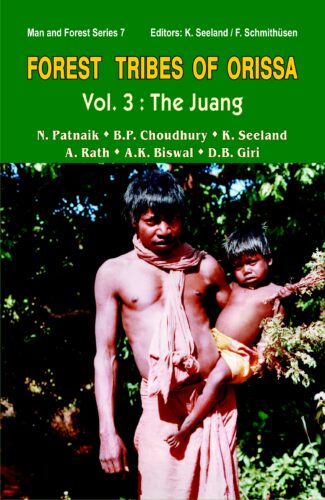

Bharatiya Samajshast...
Bharatiya Samajshastra ke Parmukh Sampardaya (PB)
by: Amit Kumar SharmaSociology, as a social science, is new to India. This volume in Hindi thus discusses the advent, teaching and development of sociology in India. It is an outstanding narration of advent and evolution of sociology in India and the major sociologists.
$20.00
ISBN: 9788124606025
Year Of Publication: 2011
Edition: 1st
Pages : xix, 284 p.
Bibliographic Details : Bibliography; Index
Language : Hindi
Binding : Paperback
Publisher: D.K. Printworld Pvt. Ltd.
Size: 23
Weight: 550
Bharatiya Samaj Shastra ke Pramukh Sampradaya is a book in Hindi language that deals with the advent, teaching and development of Sociology in India.It is an original book that deals with the major Sociologists in India. This book divides the whole history of sociology in India into nine interesting chapters. This book is an outstanding narration of the advent and evolution of Sociology in India. For a long time there was a need of such a book in Hindi .This is a helpful book for the teachers, students and researchers in various colleges, Universities and research institutions. For the researchers in Hindi literature, Cinema and Culture this can be used as a reference book. This book is also helpful for the UGC. / NET aspirants in Sociology.

- Ao Naga World-view by: Sujata Miri, Karilemla, $25.00
The book, as the title says, consists of a series of dialogues about the Ao Naga world-view, their traditions, rituals and ethical norms, and their ideas of history and objects of veneration. The dialogue took place in specially organized meetings and participants were drawn from elders of the Ao Naga tribe, Ao Naga intellectuals and scholars, a student and a visitor from outside.
The conversations that took place in these meetings were recorded and what appears in the book is a very lightly edited version of the recorded conversations. The philosophically interesting aspects of these conversations are the views expressed by various participants on the human condition, the ethical grounding of human life, the dividing line between life and death, and about their institutions for educating the young and dispensing justice.
The book aims to achieve a twofold objective: (1) to secure an authentic articulation of the traditional Ao world through a dialogue between different Ao voices (an aim pursued very differently from the anthropologists participant observation), and (2) clearing the ground for the reflection of philosophical insights thrown up in the process of this articulation. The insights will be obvious to the sympathetic and discerning reader; the reflection is left to those who will read the book with serious philosophical interest.
Sujata Miris paintings are an insightful addition to the dialogic explorations of the book. - Ethnobotany of The Kondh, Poraja, Gadaba and Bonda of the Koraput Region of Odisha, India by: F. Merlin Franco, D. Narasimhan, $42.00
Understanding the ecological knowledge of tribal and rural societies is necessary to conserve and sustain natural resources. This volume discusses the history and importance of ethnobotany with specific reference to four tribal communities of Odisha, India. It begins with an account of the nature of the tribes involved in the study. Based on participatory fieldwork, it presents an insider’s account of the tribal culture and its relationship with plants. It provides the ethnobotanical descriptions of 210 species of plants belonging to 77 families, presenting their local names, origin and the medicinal, cultural, culinary, economic, ecological uses of the species. It takes up study of the plants used by tribes in the drug-based and spiritual healing processes elaborating the philosophies behind knowledge transmission such as divination, hereditary, discipleship and kinship. Related aspects such as disease diagnosis, diet restrictions and rituals are depicted in detail. There is a special chapter on forests and non-timber forest products (NTFPs) that details the efforts of communities in forest conservation, their land-use patterns, forest classification systems, list of NTFPs and their harvest-consumption patterns. It also deals with the role of NGOs, middlemen and government agencies in this. Throughout, the emphasis is on the philosophical relationship of the communities with their ecosystem.
The book would prove extremely useful to policy-makers, academicians, social workers and general readers looking forward to accompany the tribal communities towards ethno-sensitive development. - Ageing, Indian Perspective by: L. Thara Bhai $22.00
The old and aged in a society represent the bedrock of its existence: symbolising the past. They are the carriers of tradition, values and experience, the guiding light for the young without whom society is not total and lose its stability. And progress that a society makes, culturally and morally, is reflected in the way it treats its aged. This volume, comprising presentations at a national seminar on issues of ageing of current importance, takes up crucial problems faced by the old, suggests ways to address them and discusses the future scenario viewing ageing and the aged in the context of increasing modernisation. The well-researched papers, reflecting clarity in thought and language, deal with aspects like inter-generational problems of the old, the environments effect on them and their nutritional status and health problems. They examine how the age-old institution of the family and the newly-evolved concept of the old-age home cater to the needs and comforts of the elderly persons, with investigations into care of the aged in specific homes and institutions. They also focus specially on the plight of the poor aged and old women who are debilitated by the social environment and conditions as well. They study the priorities of action where the welfare of the aged is concerned, reviewing policies and programmes in operation including the National Policy for Welfare of the aged. The book would prove invaluable to scholars of gerontology and sociologists and be of interest to general readers as well.
- Forgotten Identities by: Salima Jan $20.00
The contribution of women to sustenance and survival of cultures and civilization, as such, has assumed new proportions in the last century or so, with women engaging themselves in a range of activities for livelihood in urban centres. Their contributions have, however, largely gone unacknowledged due to various factors. This study attempts to address this aspect by focusing on the role of urban women in the handicrafts sector in Kashmir. Dr. Salima Jan examines how the artisan women, in spite of difficulties of earning livelihood in a patriachal society, have adopted handicraft as a household occupation and are contributing immensely to family and society. Based on empirical data obtained from survey and presenting case studies, the work examines the socio-economic and educational background of artisan women before delving into aspects, such as, the nature of work done by them, their wages in different handicrafts, their control over these and the conditions under which the women have opted for the role. It analyses the manner in which the women cope with their dual roles involvement in household chores as well as employment in handicrafts and deals with their individual aspirations and rights in this context i.e., their say in decision-making in families and their perceptions of job satisfaction and changing role of women. This research effort would be useful to researchers and scholars engaged in a range of sociological disciplines but, particularly, associated with sociology of work and gender studies.
- Forest Tribes of Orissa Vol. 3: The Juang by: Nityananda Patnaik, B.P. Choudhury, Klaus Seeland, A. Rath, A.K. Biswal, D.B. Giri, $36.00
In the management of renewable resources, forests have undeniably a vital role, and today, as never before, their conservation is an urgency. In view of this dire necessity the series Man and Forest tries to highlight the relevance of indigenous knowledge of various South Asian tribal communities in the sustainable management of forests/local resources more specially against the growing challenges of economic development vis-à-vis environmental hazards and a rapidly declining resource base. A scientific inquiry into indigenous knowledge is an effort to discover/rediscover the tribals’ traditional modes of production and conservation. For them it is the only source to cope with the problems of modernity affecting their lives and precarious environments. Forest Tribes of Orissa: The Juang is the seventh monograph in the series Man and Forest and, after the publication of an account of the forest world of the Dongaria Kondh in 2002, and the Kuttia Kondh in 2006. Being a tribal community in transition, the authors have tried to document and thus safeguard its local traditional knowledge of conservation, use and management of forests and natural resources. They give an account of how the Juang classify trees and other plants, hills, forests, crops and animals. Their subsistence economy, agricultural system, social organization, religious beliefs and other important socio-cultural aspects of forest life have been extensively treated. The lifestyle of this tribal community is finally reflected on the background of forest policy and the impact it has on their livelihood. The present book is, as most of the volumes in the series, the outcome of nearly ten years’ research venture involving an interdisciplinary, intercultural team of sociologists, ethnobotanists, and social anthropologists








